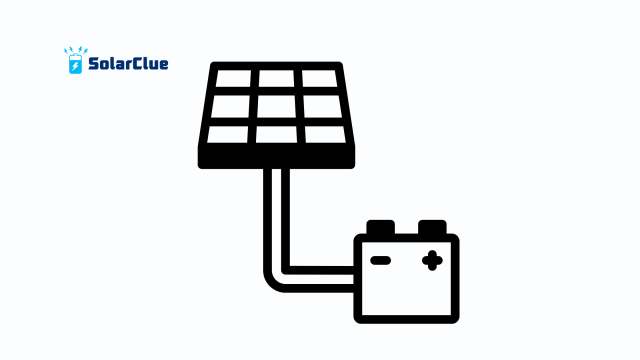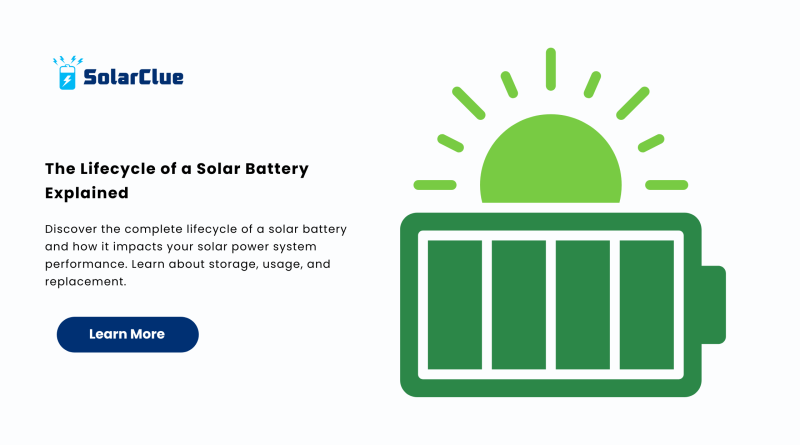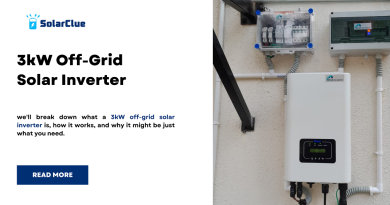The Lifecycle of a Solar Battery Explained
As the world shifts toward cleaner and more sustainable energy, solar power systems have taken center stage in both residential and commercial setups. A critical component of any efficient solar power system is the solar battery, which stores excess energy generated by solar panels during the day and makes it available when sunlight is unavailable. But have you ever wondered what the lifecycle of a solar battery really looks like?
In this blog, we will break down each stage of a solar battery’s life, how to maximize its efficiency, and when to consider a replacement. By understanding these key aspects, you’ll make smarter energy decisions that benefit both your wallet and the planet.
Table of Contents
- 1 What Is the Lifecycle of a Solar Battery?
- 2 Key Stages in the Solar Battery Lifecycle
- 3 Factors That Affect Solar Battery Lifecycle
- 4 How Long Does a Solar Battery Last?
- 5 Signs Your Solar Battery Needs Replacement
- 6 Maximizing the Lifecycle of a Solar Battery
- 7 Comparing Different Battery Types and Lifespan
- 8 Environmental and Economic Impact
- 9 Future Trends in Solar Battery Technology
- 10 When Should You Upgrade?
- 11 Final Thoughts
- 12 FAQs
What Is the Lifecycle of a Solar Battery?
The lifecycle of a solar battery refers to the total number of complete charge and discharge cycles it can undergo before its capacity significantly deteriorates. Each cycle represents one full use of the battery’s stored energy—from full charge to full discharge. Over time, repeated cycles degrade the battery’s ability to store energy, eventually requiring a replacement.
Key Stages in the Solar Battery Lifecycle
1. Installation and Configuration
Once your solar power system is installed, the battery is connected and configured to store excess electricity produced by solar panels. This is the start of its lifecycle and sets the tone for its future performance.
2. Regular Usage – Charging and Discharging
During daily operation, the solar battery stores energy during sunlight hours and releases it when needed—like during nighttime or power outages. These cycles form the core of its functionality and are counted toward its overall lifespan.
3. Gradual Performance Decline
With time, a solar battery loses efficiency. Even high-end lithium-ion batteries, which can last between 10 to 15 years, will eventually see a decline in performance after thousands of cycles. You’ll notice reduced energy storage capacity and shorter backup durations.
4. End of Life and Replacement
Eventually, every solar battery reaches a point where it can no longer hold a useful charge. This marks the end of its lifecycle. At this stage, it’s crucial to dispose of the old battery responsibly and install a new one to maintain your solar power independence.
Factors That Affect Solar Battery Lifecycle

Battery Chemistry
Different battery types have different lifespans. Lithium-ion batteries, for example, typically offer 5,000–6,000 cycles, while lead-acid batteries may only last 500–1,200 cycles. Choosing the right type significantly affects your battery’s longevity.
Depth of Discharge (DoD)
DoD refers to how much of the battery’s capacity is used before recharging. A battery regularly discharged to 90% will generally last longer than one frequently drained to 100%.
Temperature and Environment
Extreme heat or cold can reduce battery efficiency and lifespan. Installing the battery in a temperature-controlled or insulated environment helps preserve its health over time.
Usage and Maintenance
Consistent maintenance and smart usage patterns—like avoiding full discharges and overcharging—can stretch the solar battery lifecycle considerably.
How Long Does a Solar Battery Last?
On average, a solar battery lasts between 5 to 15 years. This range depends heavily on the battery type, usage frequency, environmental conditions, and maintenance. Solar power systems with lithium-ion batteries tend to last longer and perform better over time.
Signs Your Solar Battery Needs Replacement
If you’re noticing reduced energy storage, slow charging times, or frequent energy shortages, your solar battery may be nearing the end of its lifecycle. Other signs include increased utility bills or system alerts from your solar inverter.
Maximizing the Lifecycle of a Solar Battery
You can take several steps to extend the life of your solar battery:
-
Ensure proper installation by certified professionals
-
Perform routine checks and software updates
-
Keep the battery in a moderate-temperature environment
-
Use a Battery Management System (BMS) to monitor performance and prevent damage
-
Avoid fully depleting or overcharging the battery
Comparing Different Battery Types and Lifespan
| Battery Type | Average Lifespan | Cycle Count |
|---|---|---|
| Lithium-ion | 10–15 years | 5,000–6,000 |
| Lead-acid | 3–5 years | 500–1,200 |
| Saltwater | 5–10 years | 2,000–3,000 |
These differences are important when evaluating the total cost of ownership and performance of your solar power system.
Environmental and Economic Impact
Efficient use of a solar battery not only lowers your electricity bills but also contributes to reducing carbon emissions. A longer-lasting battery means fewer replacements and less waste, aligning with eco-friendly living.
Future Trends in Solar Battery Technology
Technological advancements are paving the way for longer-lasting and more efficient solar batteries. Solid-state batteries, AI-powered battery management, and improved recycling processes are all contributing to a more sustainable future in solar power.
When Should You Upgrade?
If your current solar battery is over a decade old or consistently underperforming, it might be time to consider an upgrade. Modern batteries are more efficient, come with smarter features, and are often more cost-effective in the long run.
Final Thoughts
Understanding the Lifecycle of a Solar Battery is essential for anyone invested in solar energy. From installation to eventual replacement, each stage affects your system’s performance, cost savings, and environmental impact. By choosing the right battery, using it wisely, and maintaining it well, you can extend its lifespan and maximize your energy independence.
FAQs
1. How many years does a solar battery typically last?
Most solar batteries last between 5 to 15 years depending on usage and battery type.
2. Can I extend the life of my solar battery?
Yes, by managing depth of discharge, controlling temperature, and regular maintenance.
3. What are the signs my solar battery is failing?
Reduced storage capacity, longer charging times, and frequent outages are key indicators.
4. Which battery type has the longest lifecycle?
Lithium-ion batteries generally offer the longest solar battery lifecycle.
5. Is replacing a solar battery expensive?
It depends on the type and capacity, but newer models offer better efficiency and ROI.
Want to make your solar journey even smarter? Check out top-notch solar products at solarclue.com and explore expert insights on solar trends at blog.solarclue.com. Power your future today—the solar way!




